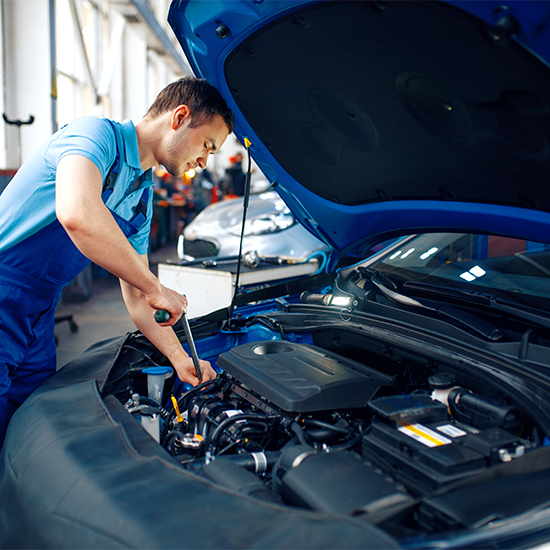All Categories
Featured

Maintaining your vehicle's tires is necessary to ensure a smooth, risk-free, and reliable driving experience. 2 key services that are frequently ignored but have a significant effect on tire longevity and efficiency are tire rotation and alignment. These solutions aid keep your automobile running efficiently and avoid uneven tire wear that can influence both safety and security and fuel economic situation. Let's dive into what tire turning and alignment are and why they're vital for your automobile.
What Is Tire Rotation? Tire rotation is the process of moving your tires from one placement to one more to guarantee they wear evenly. Given that your car's tires work at different rates depending on their position (front tires versus back tires), turning them frequently aids to disperse the wear uniformly, resulting in a longer life-span for your tires.
Tires on the front axle have a tendency to put on quicker than those on the back axle, particularly in front-wheel-drive automobiles, where the front tires handle both guiding and power. On the various other hand, back tires could put on unevenly depending on the automobile's weight circulation and driving conditions. By rotating your tires every 6,000 to 8,000 miles (or as recommended by the supplier), you'll make sure a more balanced wear pattern.
What Is Tire Positioning? Tire alignment, also called wheel positioning, refers to readjusting the angles of your vehicle's wheels to the manufacturer's specs. Proper alignment makes sure that your tires are directing in the right direction, and it aids make best use of tire life and improve lorry handling. There are 3 main aspects of placement: camber, caster, and toe.
Camber refers to the tilt of the tires from the front of the car. If your tires are tilted as well much inward or outside, it can trigger unequal wear. Wheel describes the angle of the guiding axis when watched from the side of the cars and truck. This affects the security of the steering, specifically when driving straight. Toe describes the angle at which the tires point inward or exterior when seen from above. This influences just how your car tracks when traveling. A proper alignment makes certain that all four tires are directing right in advance and are angled correctly. Imbalance can arise from striking gaps, curbs, or merely from the wear of suspension parts with time.
Why Tire Turning and Placement Matter. Extended Tire Life. Both tire turning and alignment assistance avoid unequal tire wear. When your tires put on evenly, they last much longer, which can save you cash in the lengthy run by lowering the need for early replacements.
Improved Safety. Appropriate tire turning and placement improve lorry security and handling. Misaligned tires or erratically used tires can negatively affect your capacity to steer and stop your car, especially in emergency situation situations. Routine maintenance guarantees your tires carry out optimally, providing a safer driving experience.
Much Better Fuel Efficiency. If your tires are not aligned properly, they might drag versus the roadway surface area, creating resistance. This additional friction can decrease gas performance, triggering your lorry to consume even more gas. Routine tire positioning makes sure that your lorry moves successfully, improving gas mileage.
Boosted Convenience. Imbalance or unevenly worn tires can cause a rougher trip, as your car may draw away or create resonances. By keeping your tires revolved and aligned, you'll delight in a smoother and extra comfortable driving experience.
Indicators That Your Tires Required Rotation or Positioning. It's important to remain alert for any type of indications that your tires require rotation or positioning. Look out for these common indicators:
Irregular Tire Put On: If you notice that a person tire is considerably extra used than the others, it might be time for a turning or alignment. Guiding Pull: If your cars and truck draws away while driving directly, this could show imbalance. Vibrations: If you really feel resonances in the steering wheel or the automobile itself, maybe an indication of misalignment or uneven tire wear. Squealing Tires: Uncommon tire sound could also indicate incorrect alignment or the demand for a tire turning. How Typically Should You Rotate and Align Your Tires? Tire turning should normally be done every 6,000 to 8,000 miles or as specified in your car's owner's handbook. It's an excellent idea to revolve your tires throughout every oil adjustment, as this will aid you remain on top of normal maintenance.
When it comes to alignment, it does not call for as regular solution. Usually, alignment ought to be examined at the very least when a year or whenever you see problems like pulling away or vibration. You may additionally need alignment if you have actually struck a huge crater or aesthetic, which can toss your wheels out of placement.
Conclusion: Maintain Your Tires in Leading Forming. Tire turning and placement are essential solutions that keep your lorry running smoothly, safely, and efficiently. By making the effort to have your tires turned and straightened routinely, you're purchasing your vehicle's efficiency and durability, while likewise enhancing your security when traveling. Remain aggressive with tire upkeep, and your automobile will certainly thanks with much better fuel economic climate, improved handling, and extended tire life.
Latest Posts
Discover Cut Costs on Car Maintenance with Montclare Auto Repair’s Special Deals
Learn How WyHy Federal Credit Union Saves You Money on Borrowing and Banking
Discover Cut Costs on Car Maintenance with Montclare Auto Repair’s Exclusive Deals
More
Latest Posts
Discover Cut Costs on Car Maintenance with Montclare Auto Repair’s Special Deals
Learn How WyHy Federal Credit Union Saves You Money on Borrowing and Banking
Discover Cut Costs on Car Maintenance with Montclare Auto Repair’s Exclusive Deals